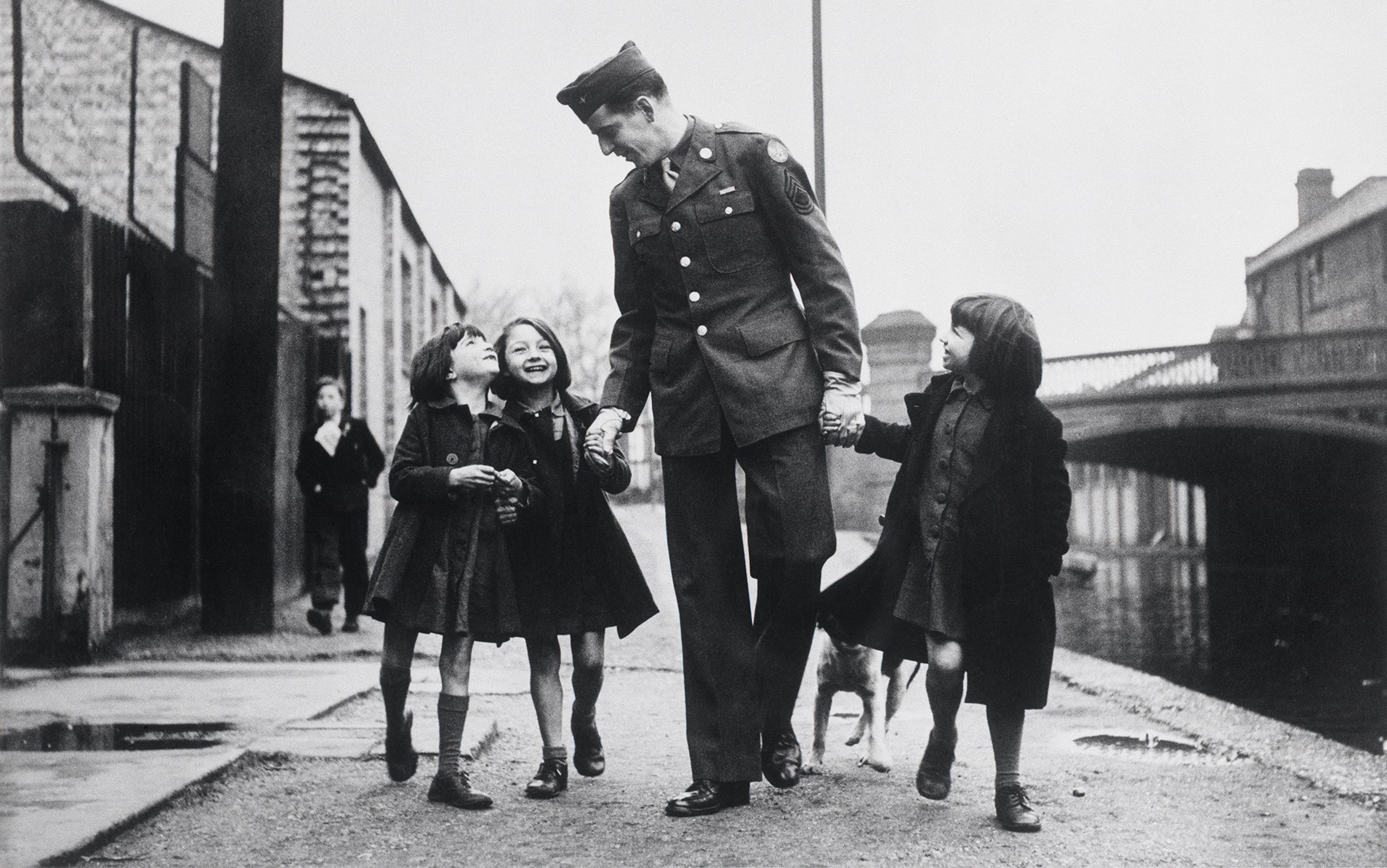Being in love is one of the most profound experiences we can have, one that can powerfully move us and irrevocably change the way we see ourselves, one another, and even the wider world. Literature and film often explore romantic love’s capacity to move us and radically alter our world (think of Romeo and Juliet, for instance), but this experience is not limited to romantic love: parents sometimes speak of experiencing overwhelming love at the first sight of their children, for example.
On the face of it, this powerful experience has little to do with morality. For many thinkers influenced by Immanuel Kant, there is no place for luck in morality, and accordingly little place for the emotions. Morality seems to have to do with helping others, regardless of who they are and whether we like or are emotionally connected to them or not. Morality, on this way of thinking, is about duties we have towards others, or demands that they can make of us. Love, on the other hand (whether romantic, familial, or love of friends) seems unpredictable, idiosyncratic and unique. We can love others for all sorts of reasons – Romeo and Juliet fall in love at first sight – and it is not something that anyone could demand of us, because it is not wholly under our control. As William Godwin memorably put it in 1793: ‘What magic is there in the pronoun “my”, that should justify us in overturning the decisions of impartial truth?’ I might especially love and care for my friends, my family and so on – but this might seem to have little to do with morality.
As a result, love (whimsical, unpredictable, unique) is often thought to be a rather separate matter from ethics (a matter of duties we hold towards all equally). At worst, the partiality that seems central to love can seem to conflict with the impartiality that seems to characterise ethics. And, at best, it may seem irrelevant to ethics. Few contemporary ethicists, in fact, give love a central role.
The philosopher and novelist Iris Murdoch, however, insists that love is not only morally relevant, but absolutely central to morality. She begins two of her most famous essays with assertions of the significance of love in ethics, claiming in ‘The Idea of Perfection’ (1962) that ‘love is a central concept in morals’, and in ‘On “God” and “Good”’ (1969) that ‘we need a moral philosophy in which the concept of love, so rarely mentioned now by philosophers, can once again be made central.’ Specifically, she suggests that, though our actual experiences of love may often fall short of it, attentive love is fundamental to morality.
But why does she think that love is so central? And is this an idea worth taking seriously today?
To see how Murdoch ends up thinking that love is central to morality, it is first worth asking a broader question: what is morality? Murdoch’s answer is that at the core of our moral life is the way we see the world, our ‘vision’ of it. We are always looking at something, in some manner, and in doing so we either build up a fairer, more just, more adequate picture of it, or we distort our vision of it. This is a continuous part of our lives.
Our vision, she thinks, largely determines how we go on to act: if I see you as my enemy, there will be no surprise when I start treating you like my enemy. If I had instead seen you as a potential friend, then I would naturally treat you with warmth and care. Acting rightly matters, she thinks, but how we act depends on how we see, principally on how we see other people.
Correspondingly, she sees the key moral activity not as choice but as attention – an idea she gets from the activist, mystic and philosopher Simone Weil. On Murdoch’s picture, our most basic moral activities are activities of attending to particular things in particular ways, since this is the activity that shapes our vision of the world.
Thinking about others in a hostile way is morally significant even if it never eventuates in outward action
To see why this is, Murdoch asks us to imagine a fraught relationship between a mother and a daughter-in-law, ‘M’ and ‘D’. M, she imagines, cannot bear D: she sees her as common, unpolished, and ‘lacking in dignity and refinement’. D’s accent and the way she dresses grate against M’s sense of decorum, and, again and again, M finds herself annoyed at D’s tiresome childishness. M, however, is a very ‘proper’ person who would never dream of acting improperly. Does her unfair assessment of D morally matter here?
It seems very intuitive here to think that M is doing something morally bad in conceiving of D as juvenile and vulgar. It is a snobbish and unfair way to think about D, and it is shaped by class and gender prejudices in concerning ways. But M is stipulated to have behaved beautifully to D despite this; she doesn’t overtly express her disdain for D or act contemptuously towards her. Still, we might think that how M sees D matters in and of itself. Thinking about others in a hostile and condescending way is morally significant even if it never eventuates in outward action. Murdoch thus suggests that vision is itself morally significant.
For Murdoch, this little vignette is representative of our moral lives as a whole. We are always building up pictures of the world. And those pictures can either be enlightening and illuminating, or unfair, distorting and misleading, like M’s vision of D. On Murdoch’s picture, to distort one’s conception of reality and fail to do justice to another person in one’s vision of them is a key kind of moral failing. Ultimately, she’ll suggest that love is what enables us to grasp important truths about others. Love, on her picture, both enables and constitutes treating others rightly.
Why would M have such an unfair image of D? More generally, why is it that we all tend to distort things, and view them in ways that fail to do justice to them? Why do we find it so hard to see one another truthfully? Murdoch argues that the key problem here is the ego. The ego, she suggests, prevents us from seeing truly because it leads us to self-deceive or fantasise. These fantasies prevent us from seeing others as they really are, a process that is shaped by both social convention and (what she calls) ‘neurosis’.
To start at the beginning, Murdoch suggests that the ego makes it difficult to properly attend to one another. We often fail to see others adequately because the ego gets in the way and obstructs or distorts such vision. On Murdoch’s very loosely Freudian picture of the human psyche, the ego is anxious and utterly self-centred, utterly absorbed in itself and focused on protecting itself at all costs. It therefore ignores or distorts anything not directly relevant to the self or inconvenient to it, even at the cost of losing one’s grasp of reality. In ‘The Sovereignty of Good Over Other Concepts’ (1970), she writes:
We are anxiety-ridden animals. Our minds are continually active, fabricating an anxious, usually self-preoccupied, often falsifying veil which partially conceals the world.
The ego, on this picture, is resolutely inward-looking: it pulls us into ourselves and our own concerns, and, in doing so, obscures everything else. As such, it distorts our attention and vision, inducing us not to look at things that in fact matter, or encouraging us to distort what we should (and could) in fact see. It can therefore prevent us from truly seeing or understanding reality, and, most importantly, it can prevent us from understanding other people.
Think of the way in which resentment towards someone who irritates you can colour your vision of them
On Murdoch’s picture, the self-centredness of the ego therefore pushes us to fantasise, to protect the ego by seeing only what we wish to see, or what concerns us – whether by ignoring certain other things altogether, or by horribly distorting them. Such fantasies present us with a world reflecting our own concerns, not a world as it truly is. She writes:
The chief enemy of excellence in morality (and also in art) is personal fantasy: the tissue of self-aggrandising and consoling wishes and dreams which prevents one from seeing what is there outside one.
The ego is dangerous, Murdoch suggests, because it so strongly incentivises us to fantasise. Fantasy prevents us from engaging with reality, prevents us even from recognising that reality.
There are some particularly stark examples of fantasising: things like belief in arcane conspiracy theories, or belief in ungrounded prejudicial stereotypes. These can plausibly feed a person’s ego in different ways, such as by making them feel privy to some kind of elite knowledge, or reinforcing their complacency in their own social standing. But Murdoch’s thought is that much of our ordinary vision is like this, too. Think, for example, about the way in which resentment towards someone who irritates you can colour your vision of them. This is a much more everyday case of fantasising that might also importantly distort your grasp of who that person really is.
Murdoch’s suggestion is that what M was doing when thinking about D was fantasising. She wasn’t really responsive to how D is, or considering the fairest way to think about her. Her ego got in the way of really seeing D. M’s caricature of D depended both on unjust social conventions, and on more individual or personally specific concerns M had (her ‘neuroses’). For instance, in seeing D as ‘vulgar’ and lacking in refinement, M’s vision made use of problematic class stereotypes that picked up on D’s lower-class status. But there was also a more personal element to M’s vision of D: her caricature was also shaped by fear and jealousy at the thought that D has displaced her from the centre of her son’s life.
These social and personal elements (convention and neurosis) can combine, Murdoch suggests in ‘The Sublime and the Good’ (1959), to create images that have great power over us. Since they speak so strongly to our egos, we are resistant to amending or displacing them. Instead, it is easier for us to retain our self-serving fantasies – and so we often do.
This picture of being caught up within our egos and unable to really see others sounds rather bleak. What would enable us to overcome the ego, and see one another rightly? How is it, according to Murdoch, that we might stop fantasising? She insists that what is needed for moral progress to occur is ultimately a reorientation of love.
For Murdoch, what is needed to counteract our tendency to draw our attention inward, towards self-centred concerns, is something that draws us outwards, towards the reality of others. What can draw us outwards in this way? Loving attention: a kind of just, patient, generous attention to others. This, she thinks, is what will improve the moral quality of our vision and put us in touch with reality as it truly is. Loving attention, she insists, is central to morality, and that is because it draws us out of ourselves towards the object of love, overcoming our habitual tendency to turn inward. She writes:
It is in the capacity to love, that is to see, that the liberation of the soul from fantasy consists.
In lovingly attending to others, we attend to them as sources of interest and value in their own right, not as things we care about merely in relation to our own concerns. We come to care about such things, as it’s often put, ‘for their own sake’. This, she suggests, frees us from the grip of our fantasies. Love draws us out of ourselves and our concerns towards the world, and especially towards other people. Such loving attention therefore enables us to get to the truth in a way that our ordinary looking – distorted as it often is by the ego’s fantasies – does not. Loving attention is a kind of discerning attention that allows us to see things as they really are.
This is an exercise in loving attention – in setting the ego aside and grasping the reality of another
Murdoch thus embraces the forceful aspect of love, its ability to overcome us. Love needs to be a powerful force, she suggests, in order to overcome the strong pull that fantasising has for us. We are strongly motivated to fantasise because doing so speaks to our deep egocentric needs and wishes. But love is a powerful-enough force that is able to overcome this, able to draw us out of ourselves and towards reality. In thus reorienting us, it can allow us to see and respond to others as they really are – and this, she thinks, is at the core of morality.
So, Murdoch continues the story about M and D by imagining that M really does want to do the right thing, so she takes herself to task. She reflects on herself and her relations to D, and realises that she’s snobbish, old-fashioned, and perhaps even jealous of D. M then attends carefully, patiently and generously to D, and the way M thinks about D gradually changes. Rather than seeing her as vulgar, she instead comes to see her as refreshingly simple. Rather than seeing her as undignified, she comes to appreciate her spontaneity. Rather than seeing her as irritatingly childish, she sees her as pleasantly youthful, and so on.
In Murdoch’s terms, what M does when she reflects further on D is lovingly attend to her. She’s trying to be fair to her, trying to do justice to her, trying to see her as she really is. In short, M is trying to understand D properly, and this is an exercise in loving attention – in setting the ego aside and really coming to grasp the reality of another individual. Lovingly attending in this way is a way of coming to grasp D, a way of being responsive to her as she really is, and Murdoch thinks of this as something that is morally significant in and of itself.
This might seem to capture some kinds of love, but we might wonder whether it captures them all. Can’t love be dangerous and misleading? Murdoch allows that it can. At the start of Romeo and Juliet, after all, Romeo is speaking of his love for Rosaline – a love that is instantly forgotten on meeting Juliet. Ordinary human love can lead us astray, and is sometimes blind and selfish. But, she insists, when love leads us astray, this is because something that properly aims at a real person has instead taken as its object an illusion, something that falls short of its own true aim. Love that is morally misleading is (though perhaps common) itself a defective, or at least imperfect, form of love. Attentive love, by contrast, represents the ideal of love.
Imagine, for example, that D’s husband in Murdoch’s example does not really know or understand her. Instead, he projects a mixture of feminine stereotypes onto her and responds positively to D as a result of this fantasy. Although this is much more positive than M’s hostile fantasies, it would still count as an at-best defective form of love – a love that has failed to meet its own standards. For Murdoch, real love is a way of actually engaging with another, not merely with an illusion. A love that fails to attend to the other is a failure of love.
Love, then, is central to morality for Murdoch because it can enable us to overcome our temptation to fantasise, and instead see and respond to others. And although the claim that love is central to morality might sound strange to contemporary ears, it is an idea that has been, for millennia, at the heart of many religious and cultural traditions such as Judaism, Christianity and Buddhism. In this light, Romeo and Juliet’s ill-fated love might be understood as more than the expression of personal whim. Rather, it might be a rare moment of undistorted blinding insight into the infinite and irreplaceable value of others.
What might this mean for us today, and how might we come to practise attentive love? Unfortunately, there are, Murdoch suggests, no quick fixes here enabling us to do so instantaneously. Nevertheless, the practice of attentive love is something that we can gradually cultivate and strengthen; the ego’s hold on us is not fixed, and we can lessen its grip bit by bit.
The way to do so is via attention to others. Though it is often difficult to do so, we can consciously devote our time and energies to focusing away from the busy throng of our own tasks and towards others. Simply dragging ourselves away from our own concerns and paying patient attention to another person helps. For example, attending to a frustratingly arrogant acquaintance may allow me to realise that their arrogance is in fact a symptom of social insecurity, and thus provide me with an opportunity to respond to them with greater insight and compassion.
Even our everyday engagement with art, skill and craft can be a starting point for learning to attend to others
Very often, we may be prompted to attend to others by our dim awareness that we are judging others harshly or failing to do justice to them. This, of course, is what happens to M. M is tacitly aware of her own snobbery and classism, though recognising it is probably still painful to her. This kind of inchoate recognition of our failures regarding others is common, and we can respond to it in different ways. The ego would have us look away and avoid the painful recognition of shortcoming. But recognising it can prompt us to look outwards, at those we are judging unjustly, and rethink our understanding of them. Significant creative imagination may then be required of us to come to grasp them more truthfully.
Finally, Murdoch makes the intriguing suggestion that even our everyday engagement with art, skill and craft can be a starting point for learning to attend to others. In learning skills and crafts or engaging with art, we learn to focus on something outside of ourselves, something we seek to gradually deepen our grasp of. The beginner, in this context, needs to exercise humility, to recognise that their initial impressions may need to be rethought and that their grasp is partial and inadequate. Thus, Murdoch suggests, though the person who took things no further would clearly be morally lacking, arts, skills and crafts are an excellent introduction to moral life and the kind of attentive love required of us there.
On Murdoch’s picture, attentive love is therefore a possibility for us all, and with practice anyone can exercise it. What it requires is for us to take the time to wrench ourselves away from the insatiable ego and orient ourselves towards the difficult reality of other people.






